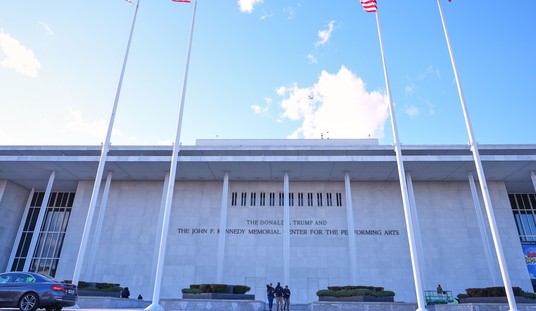As one of the first major actions at the Pentagon under Pete Hegseth, the Department of Defense modified its management policies for a section known as Correspondent’s Corridor, a portion of Pentagon space from which reporters can work full-time inside the building. The original announcement stated that the defense department would begin an annual rotation in which four news organizations moved out of the corridor in order to let other news organizations rotate their correspondents into what’s known as residential status among the Pentagon Press Corps. This change has drawn loud criticism, particularly from mainstream outlets who argue that it limits transparency. In reality, this move is a long-overdue effort to bring fairness and structure to an increasingly competitive and crowded space—where access has been based more on tradition than clear rules.
Up until now, the parameters for who was considered resident Pentagon press were rather nebulous. Correspondents Corridor is a slice of space co-located with the Office of the Assistant to the Secretary of Defense for Public Affairs (OATSD-PA), which manages the nation’s highest-level military press engagements. It provides space for the equivalent of a news bureau within the Pentagon, where a select number of defense reporters have residential access to around-the-clock workspace in the building, and a uniquely trusted status. The corridor consists of a limited number of broadcast booths, which have been leased to news organizations like CNN and NBC. It also provided unassigned desks that any news agency could use at will. This meant that literally any defense reporter could technically be considered a resident member of the Pentagon Press Corps. Many news agencies granted resident status did not actually spend the majority of their working hours inside the Pentagon. In practice, residential status boiled down to a trust relationship between public affairs officers who work at OATSD-PA and reporters who demonstrated both a willingness to learn the complex intricacies of U.S. military activities worldwide and who proved trustworthy with sensitive information.
The new policy signed by acting Assistant to the Secretary of Defense for Public Affairs John Ullyot establishes formal procedures to govern how residential press status is managed, and limits it to a fixed number of news agencies that commit to work full-time in the Pentagon. It is important to note that nonresidential defense reporters still have the same access throughout the building, and retain equivalent access to briefings and senior defense officials as their residential peers. So why the big deal?
I served for 20 years as a U.S. Army public affairs officer, and worked the full range of media support from local to national-level. In that time I observed that the best journalists expected to be treated the same as everyone else, believing that the best stories are found by connecting personally with the troops at ground level. I also learned the hard way that many national-level defense reporters are extraordinarily defensive of their lot and react with a high degree of emotionalism at the slightest critique. They view any change in their elite status a personal attack.
In a commentary published at the Washington Post, Executive Editor for Defense One, Kevin Baron, and former Assistant to the Secretary of Defense for Public Affairs under the Obama Administration, Price Floyd, claimed that formalizing policy for the Pentagon Press Corps’ residential program could endanger American lives. It is fair to criticize policy changes, but these critiques should reflect the reality of the situation. They cite basic logistical inconveniences of having to carry news production equipment in and out of the Pentagon while overlooking that journalists around the world have transported their cameras, tripods, and notepads to the site of news events for well over a century. Over my 20-year career of escorting media to Army training and combat zones, journalists carried their gear to and from the scene. None of them seemed to think that a means of oppression. In reality, the frustration being expressed by the usual suspects among the Pentagon’s press corps is a grievance over change in their social status, bucking a sense of divine right among a generally atheistic grouping. As former CNN Pentagon correspondent Barbara Starr wrote in her rebuke, “losing office space means losing around-the-clock access,” before castigating the decision as “a form of targeted retribution against publications that the Trump administration doesn’t like.” Yet Starr failed to explain how an apparent revenge against leftwing media granted residential status to The Huffington Post.
Another criticism of the Pentagon’s first innovative public affairs move in decades is that rotating news agencies through a predictable pattern of resident status prevents the press from holding military power accountable. But the Pentagon press corps has proven entirely unequal to that task. Legacy media outlets have rarely held the military to account for systemic issues, such as the lack of accountability in Iraq and Afghanistan or ongoing failures in Pentagon audits, continued issues with moldy troop barracks and family living quarters, poisonous leadership, and a myriad of other abuses. They prove more poodles than watchdogs, often focusing on sensational headlines that feed into the 'forever war' mindset that drives clicks and reinforces business interests that profit from continual conflict that devours the lives of America’s military men and women.
Gotta Love It: Pentagon Changes to Media Offices Cause Meltdowns on the Left
Accountability at the Pentagon: SecDef Hegseth Commits to Passing Clean Audit in Four Years
For legacy news correspondents, losing privileged residential access to the Pentagon is taken as a social sleight. Their frustration has less to do with the public interest and more with the threat of shifting social dynamics among the press corps. Mainstream correspondents do not like new media. News organizations that enjoyed having use of the limited space, and thus a sense of prestige, resent any move that threatens the status quo that they have benefited from for years. It seems lost on several legacy defense reporters that in an equitable world, the headquarters of the news organizations they represent would be open to the public, just as the Pentagon is. While critics focus on the inconveniences of the policy, they miss the larger point: This change is about equalizing access to a limited space that has long been dominated by a few players in the news industry who have failed to keep the public seriously engaged on substantive military issues.
The Pentagon’s new policy on residential status among news organizations reflects the reality that both public trust and viewership of mainstream media are declining while new media is on the rise. Owner of the Washington Post, Jeff Bezos, acknowledged this fact, and notes that the legacy media’s clear leftwing bias is to blame. In similar fashion, recently departed "Meet the Press" host Chuck Todd stated in his farewell letter that “The media has a lot of work to do to win back the trust of viewers/listeners/readers.” Todd went on to say that national-level, legacy reporters are not going to be able to solve that problem.
The conditions of war are ever-changing. The Pentagon’s new rotational policy is an adaption to evolving realities and makes way for a more diverse array of residential Pentagon correspondents who may be better suited to the task of trusted reporting. This is not the only area of change when it comes to how senior defense leaders communicate. Consider that Defense Secretary Pete Hegseth announced the renaming of Fort Bragg in a video taken inflight on a C-17, posted to X. When is the last time you saw a Secretary of Defense account posting content from gym time with the troops? It is apparent that this cohort of Pentagon leadership is not driven by desires to be part of the cocktail circuit that news elites prefer. At the rate things are going, I’m hoping for press conferences conducted during 5-mile runs in the near future.
In response to the mass gnashing of teeth among legacy media, the Assistant to the Secretary of Defense for Public Affairs literally doubled down. A subsequent policy memorandum issued on February 7, 2025, stated that the annual rotation of residential news agencies would grow from four to eight news organizations. It also offered to assist nonresident broadcast television journalists by assigning locker space, so that they will not have to carry news production gear in and out of the building.
Ultimately, the Pentagon’s new policy reflects the changing informational landscape that journalists must adapt to in order to remain relevant. Complaining about innovation in the Office of the Secretary of Defense is a poor use of energy. Mainstream defense reporters would do well to adapt rather than resist.
Chase Spears served as a U.S. Army public affairs officer for 20 years, retiring as a Major (Promotable) in 2023. Chase holds a Ph.D. in leadership communication from Kansas State University, and today, he runs a leadership practice that helps people to turn brave ideas into action. You can find him on X/LinkedIn/Substack/YouTube @drchasespears.














Join the conversation as a VIP Member